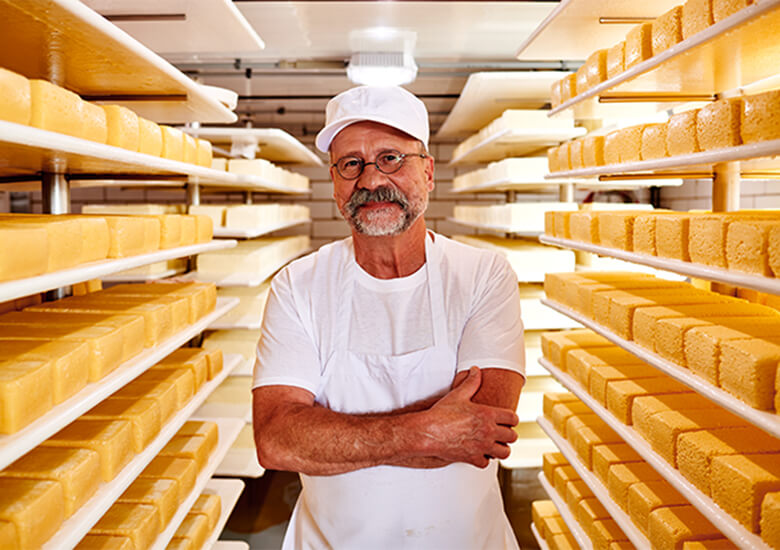Learn the Art of Floridia Cheese: A Guide to Cheese Makers Melbourne
Learn the Art of Floridia Cheese: A Guide to Cheese Makers Melbourne
Blog Article
Opening the Tricks of Artisanal Cheese Making: A Detailed DIY Overview
In the realm of cooking craftsmanship, artisanal cheese making stands as a testimony to the fragile equilibrium between tradition and development. As we begin on this trip to debunk the art of creating elegant cheeses, we are faced with a tapestry of tricks and abilities waiting to be untangled.
Choosing the Right Milk
When getting started on the journey of artisanal cheese making, the selection of milk plays a critical function in identifying the high quality and characteristics of the last product. The type of milk selected impacts the taste, structure, and overall account of the cheese.
In addition, the source of the milk, whether from cows, goats, sheep, or buffalo, adds distinct flavors and attributes to the cheese. Each kind of milk brings its very own subtleties, enabling for a vast variety of cheese varieties to be crafted based on the picked milk.
Culturing and Coagulating
To initiate the cheese-making procedure, the important actions of culturing and coagulating need to be very carefully implemented to transform milk into curds and whey. Culturing involves presenting useful bacteria to the milk, which then begins the fermentation procedure. These microorganisms convert lactose (milk sugar) into lactic acid, creating the acidic atmosphere needed for coagulation. The sort of culture made use of can substantially affect the taste, structure, and ripening of the last cheese item.

The timing and temperature control throughout culturing and coagulation are crucial factors that affect the final result of the cheese. Correct execution of these steps is crucial to make certain the preferred texture, taste, and uniformity of the artisanal cheese being produced.
Draining Pipes and Pushing Curds
After the milk healthy proteins have coagulated and the curds have actually been reduced to release whey, the next crucial action in artisanal cheese making entails draining and pressing the curds to accomplish the preferred texture and uniformity of the final cheese product. Draining pipes is the procedure of dividing the curds from the whey. This can be done by transferring the curds into a cheesecloth-lined colander or mold and mildew and enabling the whey to drain off naturally. The time for draining pipes can differ relying on the kind of cheese being made and the desired wetness material.
As soon as the curds have actually sufficiently drained pipes, the following action is pressing. Pressing aids remove any kind of remaining whey and compacts the curds to form a solid cheese wheel. Pressing can be done using specialized cheese presses that use constant and mild stress over a duration of time. The duration and pressure applied throughout pushing will certainly affect the last appearance of the cheese, from velvety and soft to difficult and company. Appropriate draining pipes and pressing are vital steps that considerably impact the quality and qualities of the artisanal cheese being generated.
Aging and Flavor Methods
Applying careful aging and flavor techniques is pivotal in boosting the deepness and complexity of artisanal cheeses, boosting their preference accounts to charming levels of refinement and refinement. Aging plays an essential duty in creating the unique tastes and structures that distinguish artisanal cheeses. Throughout the aging process, cheeses are kept in carefully managed atmospheres where variables such as humidity, air movement, and temperature are controlled to encourage the development of beneficial molds and germs. This controlled environment allows the cheese to grow gradually, developing rich tastes and complicated fragrances.
Seasoning techniques additionally contribute dramatically to the last preference of artisanal cheeses. Cheesemakers may select to introduce additional flavors by including active ingredients such as herbs, spices, and even fruits right into the cheese during the production process. Additionally, some cheeses are washed or massaged with different fluids, such as brine or alcohol, to improve their tastes and appearances.
Covering and Keeping Cheeses

Conclusion
In final thought, understanding the art of artisanal cheese making involves carefully choosing the appropriate milk, view it now complying with specific culturing and coagulating processes, draining and pushing curds effectively, and utilizing different aging and flavor strategies. By adhering to these steps faithfully and with focus to information, you can develop your own tasty and unique cheeses in your home. Remember to wrap and keep your cheeses appropriately to make certain ideal taste and structure development. Happy cheese making!
Each kind of milk brings its very own nuances, permitting for a wide array of cheese selections to be crafted based on the picked milk.After the milk healthy proteins have actually coagulated and the curds have been cut to launch whey, the next important action in artisanal cheese making entails draining pipes and pushing the curds to attain the wanted appearance and consistency of the last cheese item. A lot of cheeses need to be covered in wax paper or cheese paper to enable them to take a breath while safeguarding them from drying out. For cheeses that require to proceed aging, such as bloomy skins or washed rinds, ensure they are kept in an awesome setting like a cheese cavern or a refrigerator established to the suitable temperature level. By paying interest to the wrapping and storage space of browse this site artisanal cheeses, cheese manufacturers and lovers can maintain the integrity of these specials and totally enjoy their intricate flavors.
Report this page